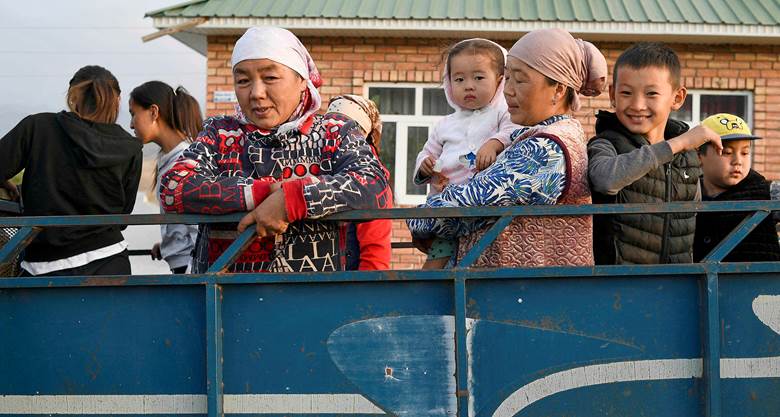Description

Copyright infringement not intended
Context: Nearly 100 people have been killed and scores injured in violent border clashes between Kyrgyzstan and Tajikistan over the last week. A ceasefire, brokered by Russia, was agreed on Friday. The two landlocked countries share a 1,000-km long border, a large part of which is disputed. There have been flare-ups in the past as well over sharing water and land resources.

Details:
- The two landlocked countries, Kyrgyzstan and Tajikistan, share a 1,000-km long border, a large part of which is disputed. There have been flare-ups in the past as well over sharing water and land resources.
- The issue of the delimitation of the border is a relic of the Soviet era. While regular talks have tried to resolve the issue, one of the crucial points of disagreement remains over the map which should be used for demarcation purposes.
- According to the Ministry of Emergency Situations of Kyrgyzstan, close to 1,50,000 people out of the 5,50,000 odd population of the Batken region have either fled the area or have been relocated by the state.
- The situation in Osh, Kyrgyzstan, is no different. The highly militarised borders also add to tensions.
- The borders of the two republics were demarcated under Joseph Stalin's leadership.
- Historically, the Kyrgyz and Tajik populations enjoyed common rights over natural resources.
- While regular talks have tried to resolve the issue, one of the crucial points of disagreement remains over the map which should be used for demarcation purposes. Almost half of its close to a 1000 km border is disputed.
- The creation of the Soviet Union saw the large-scale redistribution of livestock to collective and state farms, which upset the existing status quo.
- Unfortunately, there was only so much land to go around.
- The Tajik territory saw their livestock increase, and with scarce grazing land, agreements were signed between the two populations over the utilisation of Kyrgyz territory by the Tajiks' livestock.
What led to the current flare-up?
- The ideological basis of the current set of clashes is reinforced by developmental issues, thus providing a fertile ground for the entire geopolitical space to become a hotbed of multiple minor conflicts and clashes.
- The environmental trajectory of the conflict can be further highlighted by incidents which saw groups from either side planting trees in disputed areas and engaging in a physical confrontation using agricultural equipment as weapons.
- Ferghana valley continues to be a site of struggle and frequent violent outbursts, with the location consisting primarily of Tajiks, Kyrgyz, and Uzbeks, who have historically shared common sociological specificities, economic activities, and religious practices.
- The collapse of the Soviet Union and the subsequent dissolution of the then-existing water and land agreements saw the creation of multiple smaller independent farms, which led to a marked increase in water consumption patterns among the farmers.
- Both countries share multiple water channels with undulating trajectories and flow, which upset equitable access to water on both sides. As a result, small-scale conflicts occur practically every year during the crucial irrigation period.
- Both countries, while sharing a closely intertwined historical past, have had differing internal dynamics since coming into statehood.
- One can trace their instability to transnational challenges and internal ethnic strife.
- Leaders of both countries have contributed in one way or the other to the continuation of the conflict through the imagination of a particular type of development project, hoping to stabilise the internal dynamics of their respective countries and legitimise their power.
- This ‘development project’ is similar to how the Soviet Union looked at modernisation — which resulted in the large-scale displacement of nomadic communities, eventually contributing to the ‘environment driver’ of the current conflict.
What is the road ahead?
- The path to resolution of the conflict will require groups to agree upon a common map.
- The international community will have to make efforts to solve the dispute by involving elders in the communities, as historically, elders have been used to resolve conflicts.
- The informal small-scale governance mechanisms would also have to be further strengthened through a concerted effort by the respective countries to stabilise the geopolitical dynamics.
https://epaper.thehindu.com/Home/ShareArticle?OrgId=GE4AAEGG1.1&imageview=0














